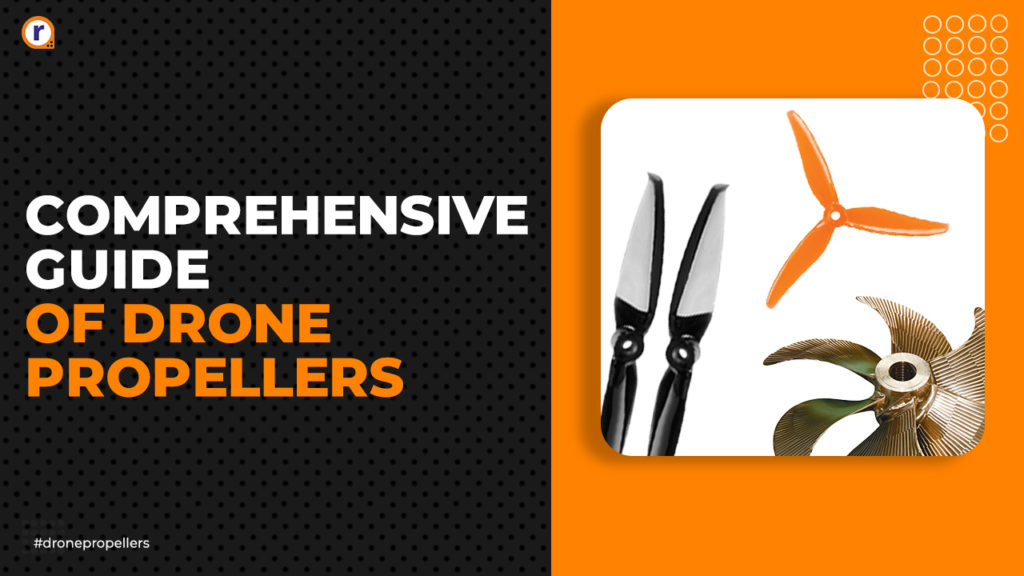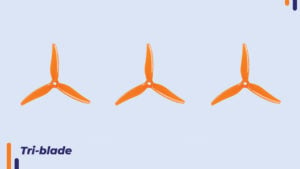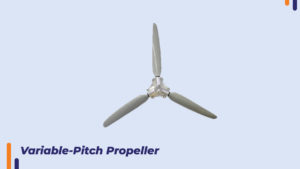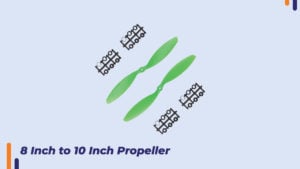A Complete Guide Of Drone Propellers and Its Type
Drone technology has advanced rapidly over the past decade and one of the key components in a drone is the propeller. Propellers are responsible for lifting the drone off the

Drone technology has advanced rapidly over the past decade and one of the key components in a drone is the propeller. Propellers are responsible for lifting the drone off the ground, maintaining stability and control, and allowing it to travel in different directions. In this blog, we will discuss the importance of drone propellers and how they work.
Types of Drone Propellers
There are two main types of drone propellers
Fixed pitch and variable pitch
Fixed pitch propellers are the most common and simplest type and do not have a single adjustable angle.
Variable-pitch propellers, on the other hand, have adjustable blades that allow you to change the angle of attack, giving you more precise control over your drone.
There are several other important types of propellers
• 3" to 7 inch
• 8" to 10 inch
• Triblades Propellers
3 inches to 7 inches
3-inch to 7-inch propellers is a range of propeller sizes commonly used on drones of various sizes and operations. Lower propellers add dexterity and throw, while larger propellers produce more thrust for heavier loads and harsher conditions. The choice of propeller size depends on the specific operating conditions of the drone. increase.
8 inches to 10 inches
8-inch to 10-inch propellers are popular for small to medium-sized drones and model aircraft. They are lightweight and efficient, making them ideal for long flights and precise manoeuvres. However, it may not be powerful enough for large or heavy aircraft.
Triblades
The Triblade Propellers features a unique blade design that reduces vibration and noise, making it ideal for applications that require smooth, quiet flight. Adding blades increases lift, reduces turbulence, and improves handling and control.
They are also less susceptible to damage than two-blade propellers, reducing the risk of accidents and accidents. However, triblades are not suitable for all aircraft types or applications. Increased lift and thrust can destabilize a light or small aircraft, and increased propeller weight and size can affect aircraft speed and maneuverability.
Mainly Used in Small Project related Drone Making 
Propeller size and pitch
The size and pitch of a drone's propellers are important factors that affect the flight characteristics of the drone. Propeller size is measured in inches and describes the diameter of the circle the blades make as they rotate. Pitch, on the other hand, refers to the angle of the blades and determines the power the propeller can produce.
Higher-pitch propellers produce more thrust but require more power, while lower-pitch propellers produce less thrust but require less power. number of blades
Drone propellers come in a variety of blade configurations, from 2 to 6 blades. In general, propellers with more blades produce more lift and are more stable, but also require more power to operate. 2-blade propellers are the most common type and are suitable for most drone applications. However, 4-blade propellers are growing in popularity due to their improved stability and manoeuvrability.
Material
Drone propellers can be made from a variety of materials, including plastic, carbon fiber, and wood. Plastic propellers are affordable and most common, but they can easily break if the drone crashes. Carbon fiber propellers are more durable and lighter than plastic, but more expensive. Wooden propellers are the least common and are used only for specific applications.
Conclusion
In conclusion, drone propellers are a critical component of a drone's flight system, and their size, pitch, number of blades, and materials all play a significant role in the drone's performance. Understanding the different types of drone propellers and their characteristics can help drone pilots select the right propellers for their specific needs and ensure a safe and stable flight experience.









